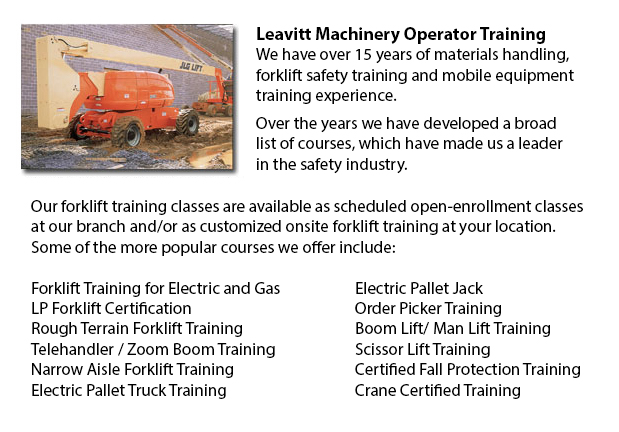
Oshawa Aerial Platform Training - Aerial platform lifts might be utilized to accomplish a lot of unique tasks executed in hard to reach aerial places. A few of the odd jobs associated with this style of lift include performing routine repair on buildings with high ceilings, repairing telephone and power lines, raising burdensome shelving units, and pruning tree branches. A ladder could also be utilized for many of the aforementioned jobs, although aerial lifts offer more security and strength when properly used.
There are a lot of designs of aerial lift trucks accessible on the market depending on what the task needed involves. Painters often use scissor aerial hoists for instance, which are grouped as mobile scaffolding, useful in painting trim and reaching the 2nd story and higher on buildings. The scissor aerial platform lifts use criss-cross braces to stretch out and lengthen upwards. There is a platform attached to the top of the braces that rises simultaneously as the criss-cross braces elevate.
Cherry pickers and bucket trucks are a further type of the aerial hoist. Normally, they possess a bucket at the end of an elongated arm and as the arm unfolds, the attached bucket lift rises. Platform lifts utilize a pronged arm that rises upwards as the lever is moved. Boom hoists have a hydraulic arm which extends outward and hoists the platform. Every one of these aerial platform lifts have need of special training to operate.
Through the Occupational Safety & Health Association, also labeled OSHA, instruction programs are offered to help make sure the employees meet occupational standards for safety, system operation, inspection and upkeep and machine load capacities. Employees receive certification upon completion of the lessons and only OSHA qualified workers should operate aerial lift trucks. The Occupational Safety & Health Organization has established rules to maintain safety and prevent injury when utilizing aerial platform lifts. Common sense rules such as not utilizing this apparatus to give rides and ensuring all tires on aerial lifts are braced so as to hinder machine tipping are noted within the rules.
Regrettably, statistics show that over 20 operators pass away each year when working with aerial platform lifts and 8% of those are commercial painters. The majority of these accidents are due to improper tire bracing and the lift falling over; for that reason several of these deaths were preventable. Operators should make sure that all wheels are locked and braces as a critical safety precaution to stop the instrument from toppling over.
Marking the encompassing area with observable markers have to be utilized to safeguard would-be passers-by in order that they do not come near the lift. Also, markings should be placed at about 10 feet of clearance amid any utility lines and the aerial lift. Lift operators must at all times be appropriately harnessed to the lift when up in the air.
-
Oshawa Scissor Lift Operator Certification
Oshawa Scissor Lift Operator Certification - North American regulators recommend that worksites need operators of scissor lifts, booms or aerial work platforms to obtain certification training. Scissor lift operator certification is not mandatory, bu... More -
Narrow Aisle Forklift / Order Picker Training / Electric Pallet Jack / Electric Pallet Truck Training in Oshawa
A pallet lift is a model of equipment dedicated in the moving of pallets of many dimensions and weights. They might be utilized as an appendage for platform lifts, cranes and other types of heavy machinery or be applied on their own. Pallet hoists ar... More -
Oshawa Crane Operator Certification
Oshawa Crane Operator Certification - The process to permit people to be able to operate certain kinds of cranes is to take crane operator certification training to get certification. The certification process incorporates classroom learning, hands-o... More -
Oshawa Forklift Certification Schools
Oshawa Forklift Certification Schools - Forklift Certification is mandatory within North America. Hence, forklift training programs are important both for companies and for people seeking jobs in industries as forklift operators. Forklift training fo... More -
Oshawa Heavy Equipment Ticket
Oshawa Heavy Equipment Ticket - Depending on the nature of the job at hand, the type of construction equipment that a heavy equipment operator makes use of varies. Each and every type of machine is built to perform specific jobs in the most effective... More -
Oshawa Heavy Equipment Certification
Oshawa Heavy Equipment Certification - Large pieces of machines and heavy-duty vehicles are usually known as heavy equipment. This broad term includes utility vehicles from forestry and agricultural implements to civil engineering vehicles, construct... More -
Oshawa Overhead Crane Safety Training
Oshawa Overhead Crane Safety Training - The overhead crane safety training program is meant to equip the operators with the right skills and knowledge in the areas of: crane safety precautions, accident avoidance, materials handling, and equipment an... More -
Oshawa Manlift Training
Oshawa Manlift Training - Various manlift training programs include the review and content of manlift devices. An essential portion of the program is the practicum where students demonstrate their knowledge and practical ability to safely operate a m... More

Forklift Certification Oshawa
TOLL FREE: 1-888-254-6157
Oshawa, Ontario
forkliftcertificationoshawa.com
Email Us
About Us


